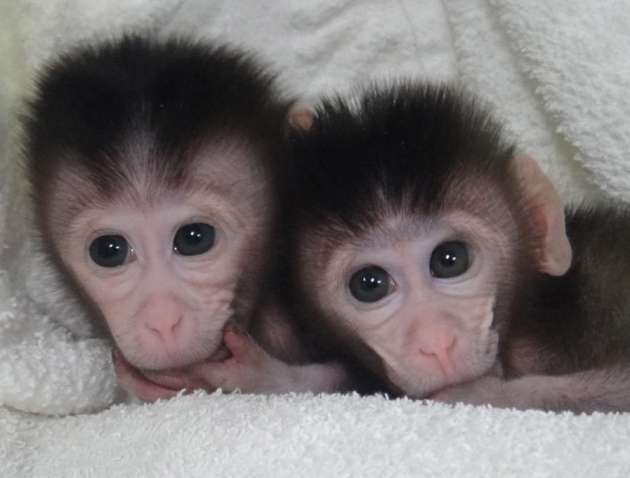Ningning and Mingming are not ordinary monkeys. From the exterior, their pink noses and furry faces make them appear as normal macaques, but at the genomic level, these brothers carry mutated genes.
Researchers at the Model Animal Research Center of Nanjing University in China reported the creation of the first genetically engineered monkeys with customized mutations last month. By inducing such mutations, researchers are one step closer towards acquiring the technology to recreate human diseases in monkeys. This would allow scientists to use primates, rather than mice and other rodents, as more realistic models of human disease. The twin macaques were born with mutations in two genes: Ppar-γ, which is involved in metabolism regulation; and Rag1, a gene required for healthy immune function. These mutations were targeted using a novel gene-editing platform called clustered regularly interspaced short palindromic repeats (CRISPR).
This innovative technology exploits an immune function found in bacteria that allows the researchers to target and destroy foreign and potentially dangerous DNA. Using a small guiding molecule called CRISPR RNA, the DNA-cutting enzyme Cas9 is targeted to the gene of interest, where it cleaves and modifies the target sequence. This technique is much more efficient than the genetic modification method currently used in rodents, which relies on spontaneous DNA exchanges to introduce mutations. Since primates reproduce much more slowly than mice, this low-efficiency technique is not a viable option in monkeys. And while genetic engineering in monkeys is a technique that has been attempted before, previous experiments used viruses that incorporated genes into random locations that could not be specifically targeted.
The team in China, led by the principal investigator Xingxu Huang, used CRISPR to alter genes in more than 180 monkey embryos before finally achieving success with the twin macaques. While modifications in these two genes do not represent a known disease condition, the monkeys provide a proof-of-principle for a technique that could have large effects in biomedical research.
This new animal model is anticipated to be extremely useful in the study of human diseases that cannot be adequately replicated in mice or rats, such as neuropsychiatric disorders.
“Although mice are giving us tremendous insight into basic brain biology and the biology of the disease, there’s still a big gap in between the mouse brain and the monkey brain,” said MIT’s Brain Institute Director, Robert Desimone, in an interview with the MIT Technology Review.
The CRISPR technology itself also has broad implications for the future of disease treatment. As a form of human gene therapy, CRISPR could one day be used to precisely swap out defective genes for their corrected counterparts. While we are likely still years away from seeing this technique being used in a clinic, it is clear that the biomedical research landscape is rapidly changing and bringing forward new technologies.








